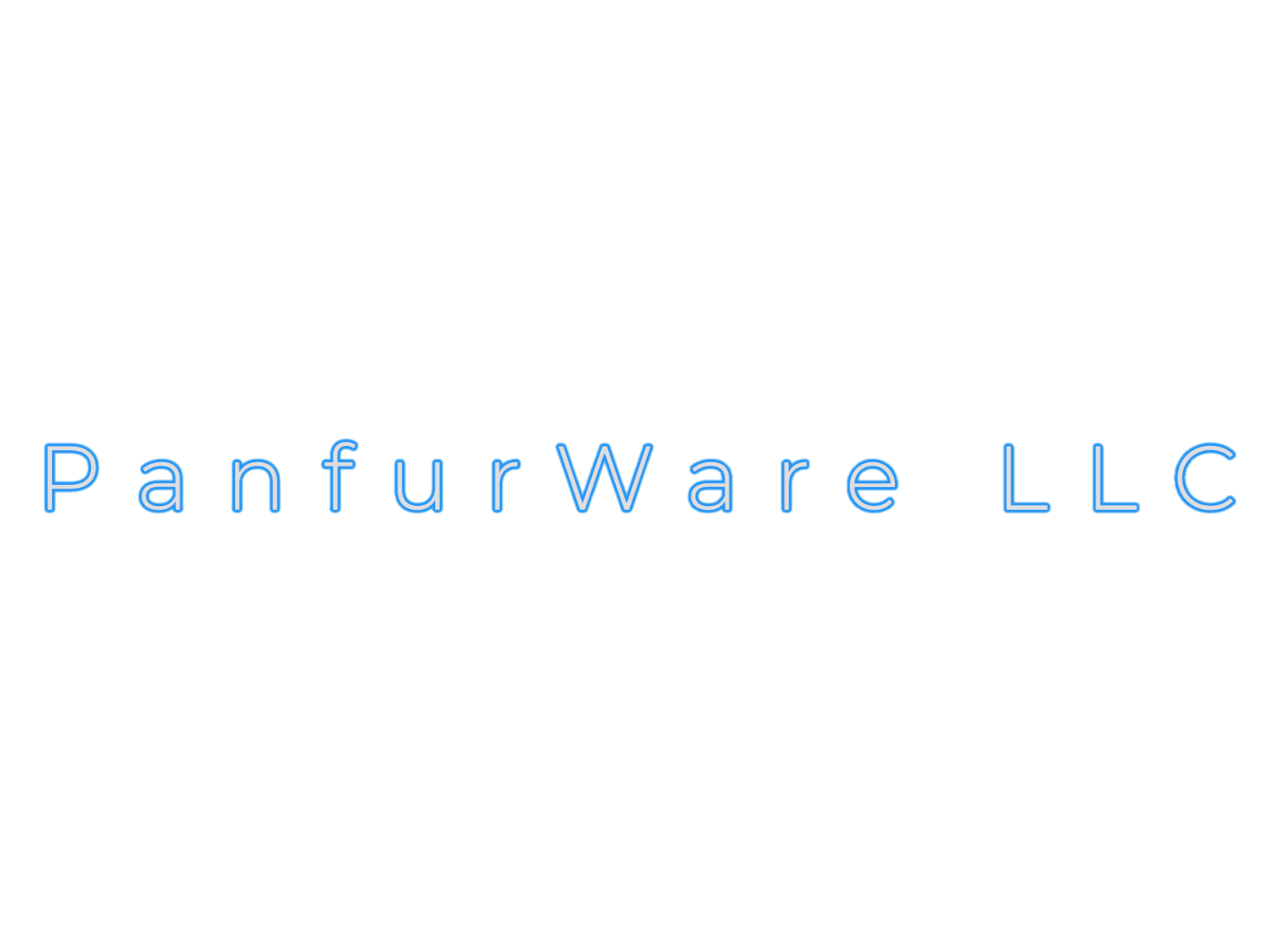Your cart is currently empty!
Category: TECH
NVIDIA RTX 50 Series GPUs: Release Dates, Prices, and Features of RTX 5070, 5080, and 5090
Free shipping over $50 for the month of April using code aprilship
The NVIDIA RTX 50 Series is a hot topic among gaming and tech enthusiasts, with many eagerly anticipating the latest developments in NVIDIA’s next-generation GPUs. In this comprehensive guide, we will explore the anticipated features, release dates, pricing, and performance of the RTX 5070, RTX 5090, and the broader NVIDIA GeForce RTX 5000 series.
NVIDIA RTX 5070: Affordable Powerhouse
The NVIDIA GeForce RTX 5070 is expected to deliver a significant leap in performance compared to its predecessor, the RTX 4070. Designed for gamers who demand high performance at a mid-range price point, the RTX 5070 is likely to feature the new Blackwell architecture, which promises enhanced ray tracing, better energy efficiency, and advanced AI capabilities through DLSS 4.
Key Features of the RTX 5070:
- Blackwell Architecture: Improved energy efficiency and performance.
- DLSS 4: Enhanced AI-driven upscaling for sharper images.
- VRAM and Memory: Rumors suggest 12GB of GDDR6X memory.
- Price Point: Estimated at around $599, making it an attractive option for mid-range users.
RTX 5070 Release Date
While NVIDIA has not officially announced the RTX 5070 release date, industry insiders speculate it will launch in late 2025, shortly after the flagship RTX 5090.
NVIDIA RTX 5090: The Ultimate GPU
For those seeking unmatched performance, the NVIDIA GeForce RTX 5090 is positioned as the flagship GPU of the RTX 50 series. Building on the success of the RTX 4090, this card is expected to dominate benchmarks and redefine gaming and creative workloads.
Key Features of the RTX 5090:
- Blackwell Architecture: The foundation for next-level performance.
- Massive VRAM: Speculated to include 24GB of GDDR7 memory.
- AI and Ray Tracing: Enhanced capabilities with DLSS 4 and second-generation RT cores.
- Power Consumption: Estimated at 450W, requiring robust cooling solutions.
- Price Point: Expected to start at $1,799, aligning with its premium positioning.
RTX 5090 Release Date
The RTX 5090 release date is rumored to be Q3 2025, preceding the RTX 5070 and RTX 5080.
NVIDIA RTX 5080: Balanced Excellence
The NVIDIA GeForce RTX 5080 aims to strike a balance between the affordability of the RTX 5070 and the raw power of the RTX 5090. With a likely VRAM configuration of 16GB GDDR6X and an estimated price around $899, the RTX 5080 will appeal to gamers who want excellent performance without reaching flagship prices.
RTX 5080 Release Date
The RTX 5080 is expected to launch alongside the RTX 5070 in late 2025, offering consumers a range of options.
Pricing Overview
- RTX 5070 Price: Estimated at $599.
- RTX 5080 Price: Expected to start at $899.
- RTX 5090 Price: Likely to begin at $1,799.
RTX 50 Series GPU Lineup
The NVIDIA 50 series GPUs, powered by the Blackwell architecture, are set to revolutionize gaming and creative tasks. Here’s a quick breakdown of the anticipated lineup:
- RTX 5070: Affordable, powerful, and efficient.
- RTX 5070 Ti: An upgraded version of the 5070 for performance enthusiasts.
- RTX 5080: Balanced power for high-end gaming.
- RTX 5090: The ultimate choice for premium performance.
Advancements in DLSS 4
Deep Learning Super Sampling (DLSS) 4 is a key feature of the RTX 5000 series. With enhanced AI algorithms, DLSS 4 will provide sharper images and better frame rates, making 4K gaming more accessible than ever before.
RTX Blackwell Architecture
The RTX 5000 series will debut the Blackwell architecture, promising improved energy efficiency, faster processing, and advanced AI features. This architecture is designed to excel in both gaming and professional applications, making the RTX 50 series GPUs versatile and future-proof.
MSI and Other Partners
MSI, ASUS, and other hardware manufacturers are expected to launch their versions of the RTX 5070, RTX 5080, and RTX 5090, featuring custom cooling solutions, factory overclocking, and aesthetic customizations.
RTX 5070 and 5090 Price Expectations
- The RTX 5070 price is projected to remain competitive at $599, appealing to budget-conscious gamers.
- The RTX 5090 price, reflecting its flagship status, is estimated at $1,799, catering to enthusiasts and professionals.
NVIDIA 5000 Series Release Date
The NVIDIA 5000 series release date is expected to roll out in stages, with the RTX 5090 launching first in Q3 2025, followed by the RTX 5080 and RTX 5070 later in the year.
RTX 5070 Ti: Enhanced Performance
The RTX 5070 Ti is rumored to feature slightly higher clock speeds and additional CUDA cores compared to the standard RTX 5070. With a potential price of $699, it will target gamers who want extra performance without breaking the bank.
AI and Content Creation
The RTX 5000 series isn’t just for gamers. With improved AI processing and features tailored for creative professionals, these GPUs will excel in tasks like video editing, 3D rendering, and AI model training.
Conclusion
The NVIDIA RTX 50 series, including the RTX 5070, RTX 5080, and RTX 5090, is set to redefine performance standards in the GPU market. With innovations like the Blackwell architecture, DLSS 4, and impressive price-to-performance ratios, these GPUs are highly anticipated by gamers and professionals alike. Whether you’re eyeing the affordable RTX 5070, the balanced RTX 5080, or the powerhouse RTX 5090, NVIDIA’s upcoming lineup has something for everyone.
Stay tuned for more updates on the RTX 50 series GPUs, including official release dates, pricing, and benchmarks. With NVIDIA leading the charge, the future of gaming and AI-driven computing looks brighter than ever.
Life Is Better Gaming Unisex Classic T-Shirt
$19.99Life Is Better Gaming Unisex Classic T-Shirt. Level up your wardrobe with the Life Is Better Gaming Unisex Classic T-Shirt. Featuring a bold and vibrant gaming-inspired design, this comfortable tee is perfect for gamers who want to show off their passion. Ideal for casual wear or gaming sessions with friends.
-

Hungry and Humble Football Player Flapping Arms Touchdown Celebration Unisex Classic T-Shirt #philly
$19.99 Select options This product has multiple variants. The options may be chosen on the product page -

Africatown in Philly Phrase Unisex Classic T-Shirt
$13.99 Select options This product has multiple variants. The options may be chosen on the product page -

Vintage Funny Cat Selfie UFO Alien Invasion Unisex Classic T-Shirt
$13.99 Select options This product has multiple variants. The options may be chosen on the product page -

Vintage Philly Underdogs German Shepherds Unisex Classic T-Shirt
$9.99 Select options This product has multiple variants. The options may be chosen on the product page -

Extinct Dire Wolf Unisex Classic T-Shirt
$19.99 Select options This product has multiple variants. The options may be chosen on the product page
————————————————
We use AI GPT Chatbots to help with our content and may get some things wrong.
————————————————-
The History of Computer Viruses and 10 Ways to Avoid Them in 2025
Free shipping over $50 for the month of April using code aprilship
Computer viruses have been a concern since the dawn of the digital age. From their humble beginnings as experimental programs to the sophisticated malware we see today, these malicious entities have shaped the evolution of cybersecurity. Understanding their history is key to avoiding them in 2025 and beyond.
The Origins of Computer Viruses
The term “computer virus” was coined in 1986 by Fred Cohen, who described self-replicating programs designed to infect systems. However, the first known example predates this definition.
- Creeper (1971): Often considered the first computer virus, Creeper was a self-replicating program created by Bob Thomas. It displayed the message, “I’m the creeper, catch me if you can!” Creeper didn’t cause harm but demonstrated the concept of self-propagation.
- Elk Cloner (1982): Written by a teenager named Rich Skrenta, Elk Cloner was one of the first viruses to spread via floppy disks. It displayed a playful poem but highlighted how easily viruses could disseminate.
- Brain (1986): The first virus to infect IBM PCs, Brain was created by two brothers in Pakistan. It targeted floppy disks and was initially intended to deter software piracy.
- Morris Worm (1988): This was the first worm to spread extensively via the internet. Created by Robert Tappan Morris, it inadvertently caused significant damage due to a flaw in its code, slowing down systems worldwide.
The Evolution of Computer Viruses
As technology advanced, so did the complexity and intent behind computer viruses:
- Melissa (1999): A macro virus that spread via email attachments, Melissa demonstrated how social engineering could trick users into spreading malware.
- ILOVEYOU (2000): Disguised as a love letter, this virus infected millions of computers within hours, causing billions in damages.
- Stuxnet (2010): A sophisticated worm designed to sabotage Iran’s nuclear program, Stuxnet marked the rise of cyber warfare.
- Wannacry (2017): This ransomware exploited vulnerabilities in older Windows systems, encrypting users’ files and demanding payment for their release.
- Emotet (2020): Originally a banking Trojan, Emotet evolved into a malware delivery service, affecting businesses globally.
10 Ways to Avoid Computer Viruses in 2025
As cyber threats grow more sophisticated, it’s essential to adopt robust practices to protect your systems. Here are ten strategies to stay safe in 2025:
- Keep Software Updated: Regular updates ensure that vulnerabilities in operating systems and applications are patched. Enable automatic updates to stay ahead.
- Use Antivirus Software: Invest in reputable antivirus solutions that provide real-time protection, malware detection, and regular updates.
- Enable Firewalls: Firewalls act as a barrier between your device and potential threats. Ensure that both hardware and software firewalls are activated.
- Practice Safe Email Habits: Avoid opening emails or attachments from unknown senders. Be wary of phishing attempts that mimic legitimate organizations.
- Employ Multi-Factor Authentication (MFA): MFA adds an extra layer of security by requiring additional verification steps, making it harder for attackers to access your accounts.
- Regularly Backup Data: Create routine backups of critical files to secure locations, such as external drives or cloud storage. This helps mitigate ransomware attacks.
- Avoid Public Wi-Fi: Public networks are often unsecured, making them prime targets for cybercriminals. Use a Virtual Private Network (VPN) for secure connections.
- Educate Yourself and Others: Stay informed about the latest cyber threats and educate employees, friends, and family about safe online practices.
- Limit Administrative Privileges: Only use administrator accounts when necessary. Restricting privileges reduces the risk of malware executing critical changes.
- Vet Downloads and Apps: Download software only from trusted sources. Verify app permissions to ensure they don’t request unnecessary access.
The Future of Cybersecurity
In 2025, the landscape of cybersecurity will continue to evolve. Artificial Intelligence (AI) and Machine Learning (ML) are being leveraged to detect and counter threats proactively. However, cybercriminals are also adopting these technologies, leading to a constant battle of wits. Staying vigilant and proactive is the best defense against emerging threats.
Conclusion
The history of computer viruses is a testament to the ingenuity of both their creators and the defenders combating them. From the playful Creeper to the devastating Wannacry, viruses have left an indelible mark on the digital world. By understanding their evolution and adopting best practices, individuals and organizations can safeguard their digital environments in 2025 and beyond.
Vintage I Love Tech Crewneck Sweatshirt
$24.99Vintage I Love Tech Crewneck Sweatshirt. Keep it comfy and nerdy with the Vintage ‘I Love Tech’ Crewneck Sweatshirt! For those chilly coding sessions—because tech never sleeps, and neither should your style!
-

Hungry and Humble Football Player Flapping Arms Touchdown Celebration Unisex Classic T-Shirt #philly
$19.99 Select options This product has multiple variants. The options may be chosen on the product page -

Africatown in Philly Phrase Unisex Classic T-Shirt
$13.99 Select options This product has multiple variants. The options may be chosen on the product page -

Vintage Funny Cat Selfie UFO Alien Invasion Unisex Classic T-Shirt
$13.99 Select options This product has multiple variants. The options may be chosen on the product page -

Vintage Philly Underdogs German Shepherds Unisex Classic T-Shirt
$9.99 Select options This product has multiple variants. The options may be chosen on the product page -

Extinct Dire Wolf Unisex Classic T-Shirt
$19.99 Select options This product has multiple variants. The options may be chosen on the product page
————————————————
We use AI GPT Chatbots to help with our content and may get some things wrong.
————————————————-
10 Reasons Why EV Ownership Will Skyrocket in the U.S. in 2025
Free shipping over $50 for the month of April using code aprilship
Electric vehicles (EVs) are becoming an integral part of the automotive landscape, with significant growth anticipated in the U.S. in 2025. From advancements in technology to growing environmental awareness, multiple factors are driving the shift to electric mobility. Here are 10 compelling reasons why more Americans will become EV owners in 2025.
1. Falling EV Prices
One of the main barriers to EV adoption has historically been the cost. However, as battery technology advances and economies of scale improve, EV prices are dropping. The cost of lithium-ion batteries, a key component of EVs, has declined dramatically over the past decade. In 2025, we’re likely to see more affordable models, making EVs accessible to a wider range of consumers. For instance, over 60% of electric cars sold in China in 2023 were cheaper than their gasoline counterparts, showcasing the global trend of declining EV costs (IEA).
2. Extended Driving Range
Early EVs were often criticized for their limited range, but this is rapidly changing. Modern EVs now boast ranges that rival or even surpass traditional gasoline vehicles. By 2025, ongoing improvements in battery technology will further extend driving ranges, alleviating consumer concerns about range anxiety and making EVs more practical for everyday use. For example, the upcoming Audi A6 e-tron is expected to offer rapid charging and long ranges (Wired).
3. Government Incentives and Policies
Federal and state governments continue to offer incentives to encourage EV adoption. Tax credits, rebates, and grants make purchasing EVs more attractive. Additionally, stricter emissions regulations and potential bans on internal combustion engine vehicles in some states will drive more consumers toward EVs. As of January 1, 2025, federal EV tax credits of up to $7,500 are (still) available for eligible electric vehicle purchases in the U.S. (Investors).
4. Expanding Charging Infrastructure
A robust charging network is crucial for EV adoption. The U.S. government and private companies are investing heavily in expanding the charging infrastructure. By 2025, rapid chargers will be more prevalent along highways, in urban areas, and even in rural regions, ensuring EV owners have convenient access to power wherever they go. Companies like Rivian have launched networks of EV chargers accessible to various brands, enhancing convenience for EV owners (MarketWatch).
5. Corporate Fleet Electrification
Major corporations are transitioning their fleets to EVs to meet sustainability goals and reduce operating costs. Amazon, UPS, and FedEx, among others, are already adopting electric delivery vehicles. As fleet electrification becomes mainstream, it will not only boost EV adoption but also normalize the technology for individual consumers. For instance, Rivian recently delivered 14,183 vehicles in a single quarter, many for corporate fleets (MarketWatch).
6. Environmental Awareness and Climate Change Concerns
Americans are increasingly concerned about climate change and its impacts. EVs produce significantly lower greenhouse gas emissions compared to gasoline-powered cars. This environmental benefit is a major motivator for eco-conscious consumers looking to reduce their carbon footprint. EVs are recognized as a key technology to decarbonize road transport, which accounts for over 15% of global energy-related emissions (IEA).
7. Advancements in Battery Recycling
The environmental impact of EV batteries has been a topic of concern. However, advancements in battery recycling technologies are addressing this issue. Companies are developing methods to repurpose old batteries and extract valuable materials like lithium, cobalt, and nickel. These innovations will make EVs more sustainable and appealing to environmentally conscious buyers in 2025.
8. Innovation in Vehicle-to-Grid Technology
Vehicle-to-grid (V2G) technology allows EVs to send unused electricity back to the grid, helping to stabilize energy demand. By 2025, this technology will be more widespread, offering EV owners additional financial incentives and making their vehicles even more valuable assets.
9. Growing Variety of EV Models
Automakers are introducing a broader range of EV models to cater to diverse consumer needs. From compact cars to SUVs, trucks, and luxury vehicles, there will be an EV for every lifestyle and budget. This diversity will attract more buyers, including those who previously felt EVs didn’t meet their needs. Anticipated releases include the Range Rover EV, BMW’s iX3, and Hyundai’s Ioniq 9, offering options from luxury to budget-friendly vehicles (Wired).
10. Improved Resale Value
As EVs become more popular and battery durability improves, their resale value is increasing. This makes EVs a smarter financial investment for consumers concerned about long-term costs. The Tesla Model 3, for instance, has demonstrated strong resale values, retaining a significant percentage of its original price after several years.
Conclusion
The future of transportation is electric, and 2025 will be a pivotal year for EV adoption in the U.S. With falling prices, better infrastructure, and increasing environmental awareness, more Americans are expected to make the shift to EVs. As these 10 factors converge, the road ahead looks bright for electric mobility.
Vintage Style Life Is Better With An EV Crewneck Sweatshirt
$26.99Vintage Style Life Is Better With An EV Crewneck Sweatshirt. Embrace sustainability with the Vintage Style Life Is Better With An EV Crewneck Sweatshirt. This cozy, retro-inspired sweatshirt is perfect for those who want to express their love for electric vehicles and a greener future. With a stylish design that pairs well with any casual look, it’s a must-have for eco-conscious individuals. Made from soft, high-quality fabric, this sweatshirt keeps you comfortable while showcasing your passion for clean energy and innovation.
-

Hungry and Humble Football Player Flapping Arms Touchdown Celebration Unisex Classic T-Shirt #philly
$19.99 Select options This product has multiple variants. The options may be chosen on the product page -

Africatown in Philly Phrase Unisex Classic T-Shirt
$13.99 Select options This product has multiple variants. The options may be chosen on the product page -

Vintage Funny Cat Selfie UFO Alien Invasion Unisex Classic T-Shirt
$13.99 Select options This product has multiple variants. The options may be chosen on the product page -

Vintage Philly Underdogs German Shepherds Unisex Classic T-Shirt
$9.99 Select options This product has multiple variants. The options may be chosen on the product page -

Extinct Dire Wolf Unisex Classic T-Shirt
$19.99 Select options This product has multiple variants. The options may be chosen on the product page
————————————————
We use AI GPT Chatbots to help with our content and may get some things wrong.
————————————————-
-
Electric Vehicles vs. Gas Vehicles in a Dystopian, Natural Disaster, or Mass Power Outage Scenario
Free shipping over $50 for the month of April using code aprilship
In an era where climate change and geopolitical uncertainties increasingly dominate headlines, the debate between electric vehicles (EVs) and gas-powered vehicles is more pertinent than ever. While EVs are often lauded for their environmental benefits, gas vehicles still hold the crown in certain high-stakes scenarios. But what happens when society faces a dystopian reality, a catastrophic natural disaster, or a mass total power outage? Let’s dive into the pros and cons of each type of vehicle in these extreme conditions and explore which one might be the ultimate survival tool.
The Role of Infrastructure
Electric Vehicles
EVs rely heavily on infrastructure for charging. In a dystopian scenario, where power grids are compromised, access to charging stations becomes a significant challenge. While some EV owners might have solar panels or backup generators, these systems are not foolproof. Solar panels require sunlight and time to recharge batteries, while generators need fuel—an irony if fuel is already scarce.
Gas Vehicles
Gas-powered cars, on the other hand, rely on fuel that is easier to stockpile. Gas stations often have backup generators to keep pumps operational during power outages. Even in remote or disaster-stricken areas, siphoning gas from other vehicles or storage tanks can be a practical solution. However, fuel eventually depletes, and in a prolonged dystopian scenario, refineries and supply chains may also collapse.
Verdict: Gas vehicles have a clear short-term advantage when it comes to fueling flexibility, but their reliance on finite resources could be a long-term disadvantage.
Survivability in Extreme Scenarios
Natural Disasters
In scenarios like hurricanes, floods, or earthquakes, road conditions often deteriorate. EVs, especially those with a high ground clearance, can perform well as they have fewer mechanical parts exposed to the elements. Modern EVs are also equipped with advanced navigation and sensors, making them excellent for avoiding hazards.
Gas vehicles, while robust, are more susceptible to issues like water contamination in fuel tanks or engine failures in extreme conditions. However, their mechanical simplicity in older models can be an advantage, as they’re easier to repair without advanced tools.
Verdict: EVs shine in technologically advanced adaptability, but gas vehicles may edge out in ease of repair and mechanical reliability in harsh environments.
Dystopian Survival
In a dystopian world where resources are scarce and societal norms collapse, both EVs and gas vehicles face unique challenges. EVs, with their quiet operation, could help users avoid drawing attention. Their ability to double as mobile power sources—providing energy for communication devices or medical equipment—is a game-changer.
Gas vehicles, however, offer better range and flexibility in areas without power or charging infrastructure. Off-road vehicles, especially, could excel in rugged terrains often associated with dystopian survival.
Verdict: EVs are better for stealth and utility, while gas vehicles excel in range and rugged terrain adaptability.
Mass Power Outages
In a mass power outage, the limitations of EVs become glaring. Without access to a functioning power grid, EV owners must rely on pre-charged batteries or alternative charging solutions like portable solar chargers. These methods, while innovative, are time-consuming and often inefficient for maintaining full battery capacity.
Gas vehicles, on the other hand, are less dependent on electricity for operation. However, if the outage affects fuel production or distribution, gas shortages can occur, leading to widespread fuel rationing and increased black-market activity.
Verdict: Gas vehicles have an upper hand in the initial phase of a power outage, but both types face limitations if the situation persists.
Cost and Resource Availability
Electric Vehicles
While EVs are expensive upfront, their operating costs are generally lower. In a world with disrupted supply chains, the absence of oil changes and reduced mechanical wear can be significant. EV batteries, however, degrade over time, and replacing them in a dystopian setting could be virtually impossible.
Gas Vehicles
Gas vehicles, especially older models, are more affordable and easier to maintain. Their dependence on oil, a finite resource, becomes a major drawback when supply chains are severed. Additionally, the cost of fuel spikes during crises, making long-term use expensive.
Verdict: EVs have lower operating costs but face long-term viability issues; gas vehicles are cheaper initially but depend on a diminishing resource.
Environmental Impact
Electric Vehicles
In disaster scenarios, the environmental impact of your vehicle might seem like a secondary concern. However, EVs generate zero tailpipe emissions, making them a cleaner option when air quality is already compromised by fires, debris, or industrial collapse.
Gas Vehicles
Gas vehicles contribute to air pollution, compounding health risks in scenarios where medical aid is limited. In prolonged dystopian conditions, the cumulative environmental damage could worsen living conditions.
Verdict: EVs have a clear advantage in minimizing environmental harm during crises.
Adaptability to Emerging Technologies
Electric Vehicles
EVs are at the forefront of emerging technologies. Innovations like vehicle-to-grid (V2G) systems allow EVs to act as backup power sources for homes. In disaster scenarios, this feature can be lifesaving. Autonomous driving capabilities, present in many modern EVs, could also prove invaluable for navigating treacherous conditions or transporting supplies.
Gas Vehicles
Gas vehicles lack the integration with emerging technologies that EVs offer. While some advancements have been made, such as hybrid systems and biofuel compatibility, they don’t match the versatility of EVs in leveraging new technologies.
Verdict: EVs lead in adaptability and utility thanks to their technological advancements.
Psychological and Practical Considerations
Surviving a dystopian or disaster scenario isn’t just about the tools you have; it’s about how you use them. EVs often appeal to those who value innovation and sustainability, while gas vehicles are preferred by individuals who prioritize reliability and simplicity. Ultimately, the best choice may depend on your personal circumstances, such as where you live, your access to resources, and your willingness to prepare for contingencies.
Conclusion
Both electric and gas-powered vehicles have their strengths and weaknesses in dystopian, natural disaster, or mass power outage scenarios. Gas vehicles offer unmatched flexibility and range in the short term but falter in long-term sustainability. EVs excel in stealth, environmental impact, and technological adaptability but rely heavily on infrastructure that may not survive a catastrophic event.
For preppers and survivalists, the ideal solution might be a combination: a gas vehicle for immediate escape and an EV as a backup power source and utility vehicle. As technology evolves, future EVs may overcome many of their current limitations, potentially making them the ultimate survival tool. Until then, the choice between electric and gas vehicles remains a strategic decision based on your unique survival priorities.
-

Hungry and Humble Football Player Flapping Arms Touchdown Celebration Unisex Classic T-Shirt #philly
$19.99 Select options This product has multiple variants. The options may be chosen on the product page -

Africatown in Philly Phrase Unisex Classic T-Shirt
$13.99 Select options This product has multiple variants. The options may be chosen on the product page -

Vintage Funny Cat Selfie UFO Alien Invasion Unisex Classic T-Shirt
$13.99 Select options This product has multiple variants. The options may be chosen on the product page -

Vintage Philly Underdogs German Shepherds Unisex Classic T-Shirt
$9.99 Select options This product has multiple variants. The options may be chosen on the product page -

Extinct Dire Wolf Unisex Classic T-Shirt
$19.99 Select options This product has multiple variants. The options may be chosen on the product page
————————————————
We use AI GPT Chatbots to help with our content and may get some things wrong.
————————————————-
-
Bytedance’s INFP: Transforming Media with Expressive AI
Free shipping over $50 for the month of April using code aprilship
The digital age continues to evolve, and at its forefront stand groundbreaking innovations like Bytedance’s latest AI marvel, INFP. Announced recently, this AI system has the extraordinary ability to make any single image talk or sing expressively using audio files. Min Choi (@minchoi), a prominent figure in tech discourse, described the innovation as “mind-blowing,” and the implications indeed promise to revolutionize media production, podcasting, and beyond.
What is INFP?
Bytedance, the parent company of global sensations like TikTok and Douyin, is no stranger to redefining user-generated content. With INFP, the company has taken a significant leap into expressive AI. INFP allows users to input an image and synchronize it with any audio file, making the image appear as though it is speaking or singing. What sets it apart is its ability to replicate nuanced human expressions, making the generated content not just realistic but emotionally compelling.
This advancement builds on cutting-edge developments in deep learning, computer vision, and natural language processing. By analyzing the audio file’s tone, rhythm, and emotion, INFP adjusts the image’s facial movements, lip-sync, and even microexpressions to align seamlessly.
Min Choi’s Take on INFP’s Potential
Min Choi has long been recognized for highlighting tech trends that reshape industries. In a succinct yet impactful comment, “This is mind-blowing!” Min underscored the transformative potential of INFP. Beyond entertainment, this technology could redefine podcasting, virtual influencers, and even education.
For podcasters, INFP introduces an entirely new way to engage audiences. Instead of static thumbnails or generic visuals, hosts can use their likeness or other images to deliver content expressively. Imagine a single headshot of a host delivering an entire episode, dynamically reacting to their voice. This capability could reduce production costs while enhancing viewer engagement.
Key Applications of INFP
The versatility of INFP means its applications extend far beyond podcasting. Here’s a closer look at how various industries might leverage this revolutionary AI:
- Podcasting and Content Creation
Audio content creators can now add a visual dimension to their work. Whether for YouTube uploads of podcasts or social media snippets, the ability to make static images talk can bridge the gap between audio and video formats. - Virtual Influencers and Marketing
Virtual influencers are gaining traction, and INFP could propel this trend further. Brands could create expressive virtual personalities from simple images, using pre-recorded scripts to interact with audiences. - Education and E-Learning
Educational institutions and e-learning platforms can use INFP to make static diagrams or illustrations more interactive. For example, a historical figure’s portrait could “narrate” their biography in a history lesson. - Entertainment and Gaming
From animated music videos to dynamic NPCs (non-playable characters) in video games, INFP opens new creative avenues for storytelling and immersion. - Accessibility
INFP can also aid in accessibility, providing lip-synced visuals for the hearing impaired or transforming written content into expressive, spoken-word video.
Technical Insights: How INFP Works
At the core of INFP’s innovation are advanced neural networks designed for image processing and audio synthesis. It uses a combination of:
- Generative Adversarial Networks (GANs): These enable INFP to generate lifelike visuals based on static images.
- Audio-to-Visual Synchronization Models: These ensure the image’s movements align with the audio input in real-time.
- Emotional AI: By analyzing the emotion embedded in the audio file, INFP enhances the realism of facial expressions and gestures.
Bytedance’s expertise in optimizing algorithms for large-scale consumer use ensures that INFP is not just a lab experiment but a scalable solution ready for real-world applications.
Challenges and Ethical Considerations
While INFP promises exciting possibilities, it also raises significant concerns:
- Deepfake Misuse
The ability to create hyper-realistic talking images can be exploited to spread misinformation or create malicious content. Robust safeguards and detection tools will be critical. - Copyright Issues
Using images or voices without proper rights could lead to legal complications. Users and developers must navigate these waters responsibly. - Cultural Sensitivity
As with any generative AI, the potential for unintentional biases or culturally insensitive outputs remains a risk. Developers must ensure that INFP respects diversity. - Over-reliance on AI
The ease of content creation with INFP might reduce demand for traditional artistic skills like animation or videography. Balancing innovation with cultural preservation is essential.
What’s Next for INFP?
Bytedance’s unveiling of INFP represents just the beginning. As AI technology evolves, it’s likely that future iterations will include multi-image animations, real-time video integration, and even multi-language support. Combined with AR/VR, INFP could redefine virtual interactions, making digital avatars indistinguishable from real human presenters.
The Competitive Landscape
Bytedance isn’t alone in exploring expressive AI. Competitors like OpenAI and Google have also developed systems that bridge the gap between static visuals and dynamic interactions. However, Bytedance’s edge lies in its deep integration with content-driven platforms like TikTok. With INFP, Bytedance could dominate a niche where creators seek user-friendly tools for expressive content.
Public Reception and Social Media Buzz
The excitement surrounding INFP is palpable. Min Choi’s post alone garnered widespread attention, sparking discussions across social media platforms. Creators, marketers, and educators are eager to experiment with this tool, while tech enthusiasts speculate on its long-term implications.
How to Stay Ahead in the INFP Era
For businesses and individuals looking to harness INFP’s potential, here are some strategies:
- Embrace Experimentation:
Dive into the technology to understand its capabilities. Early adopters often gain a competitive edge. - Prioritize Ethical Use:
Transparency and respect for intellectual property are paramount. Ensure you have the rights to images and audio files used. - Focus on Storytelling:
While the technology is impressive, content remains king. Use INFP to enhance narratives rather than relying solely on novelty. - Invest in Training:
Equip your team with the skills to use tools like INFP effectively, blending technical expertise with creative vision.
Conclusion: The Dawn of a New Content Era
Bytedance’s INFP is more than just a tool—it’s a glimpse into the future of content creation. For podcasters, marketers, educators, and beyond, this innovation offers unprecedented opportunities to engage audiences in dynamic ways. As Min Choi aptly noted, this development is indeed “mind-blowing,” and its ripple effects will likely shape digital media for years to come.
Whether you’re a creator eager to explore new horizons or a business looking to captivate your audience, INFP signals a transformative shift worth embracing. The journey into expressive AI has only just begun, and the possibilities are as boundless as the imagination itself.
Vintage Let the robots handle it – ai ml generative sentient Crewneck Sweatshirt
$24.99Vintage Let the robots handle it – ai ml generative sentient Crewneck Sweatshirt. Embrace the future in style with the Vintage ‘Let the Robots Handle It’ Crewneck Sweatshirt! Perfect for AI lovers who know it’s best to let the machines do the work—because why not let the sentient beings take over?
-

Hungry and Humble Football Player Flapping Arms Touchdown Celebration Unisex Classic T-Shirt #philly
$19.99 Select options This product has multiple variants. The options may be chosen on the product page -

Africatown in Philly Phrase Unisex Classic T-Shirt
$13.99 Select options This product has multiple variants. The options may be chosen on the product page -

Vintage Funny Cat Selfie UFO Alien Invasion Unisex Classic T-Shirt
$13.99 Select options This product has multiple variants. The options may be chosen on the product page -

Vintage Philly Underdogs German Shepherds Unisex Classic T-Shirt
$9.99 Select options This product has multiple variants. The options may be chosen on the product page -

Extinct Dire Wolf Unisex Classic T-Shirt
$19.99 Select options This product has multiple variants. The options may be chosen on the product page
————————————————
We use AI GPT Chatbots to help with our content and may get some things wrong.
————————————————-
- Podcasting and Content Creation










